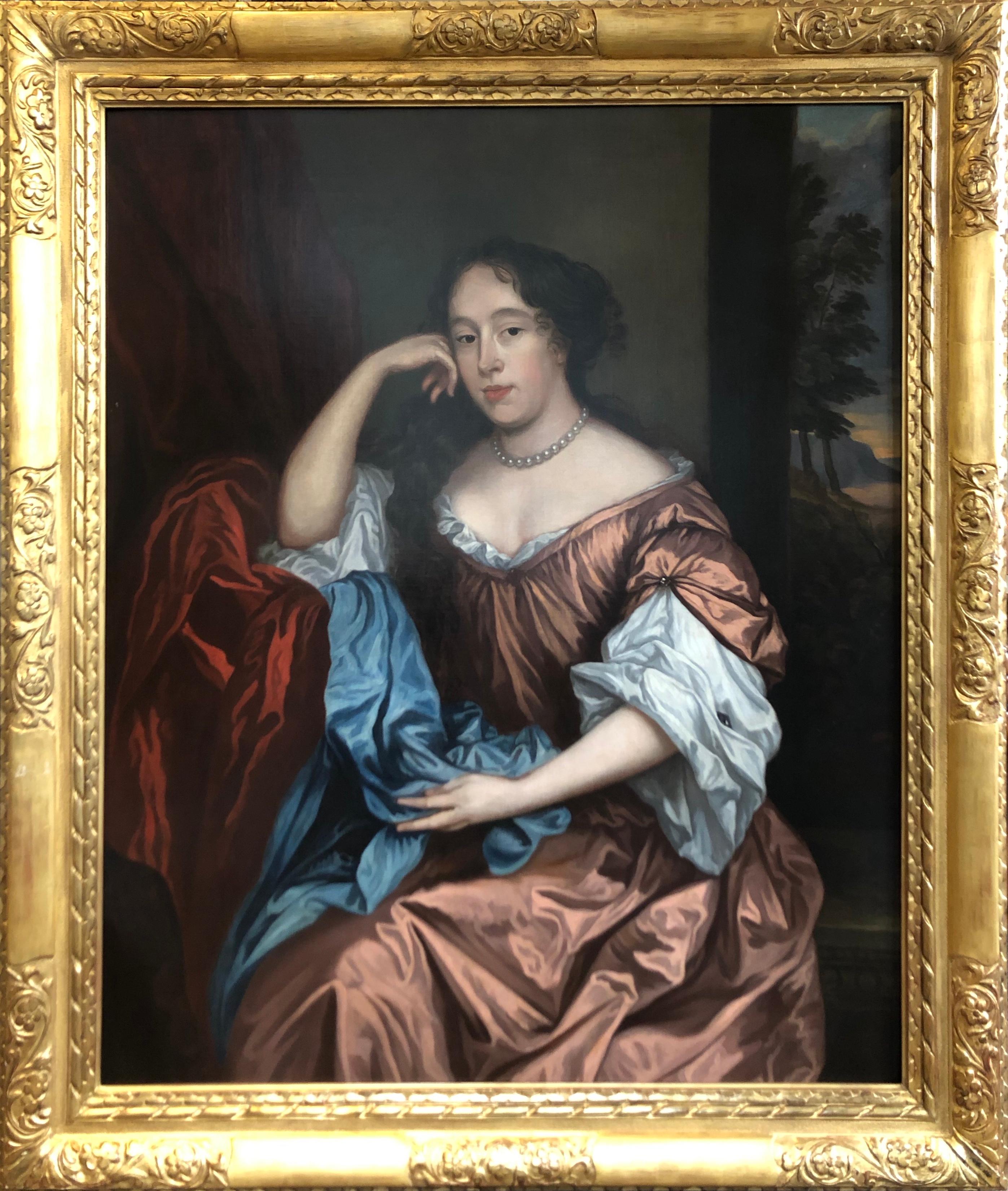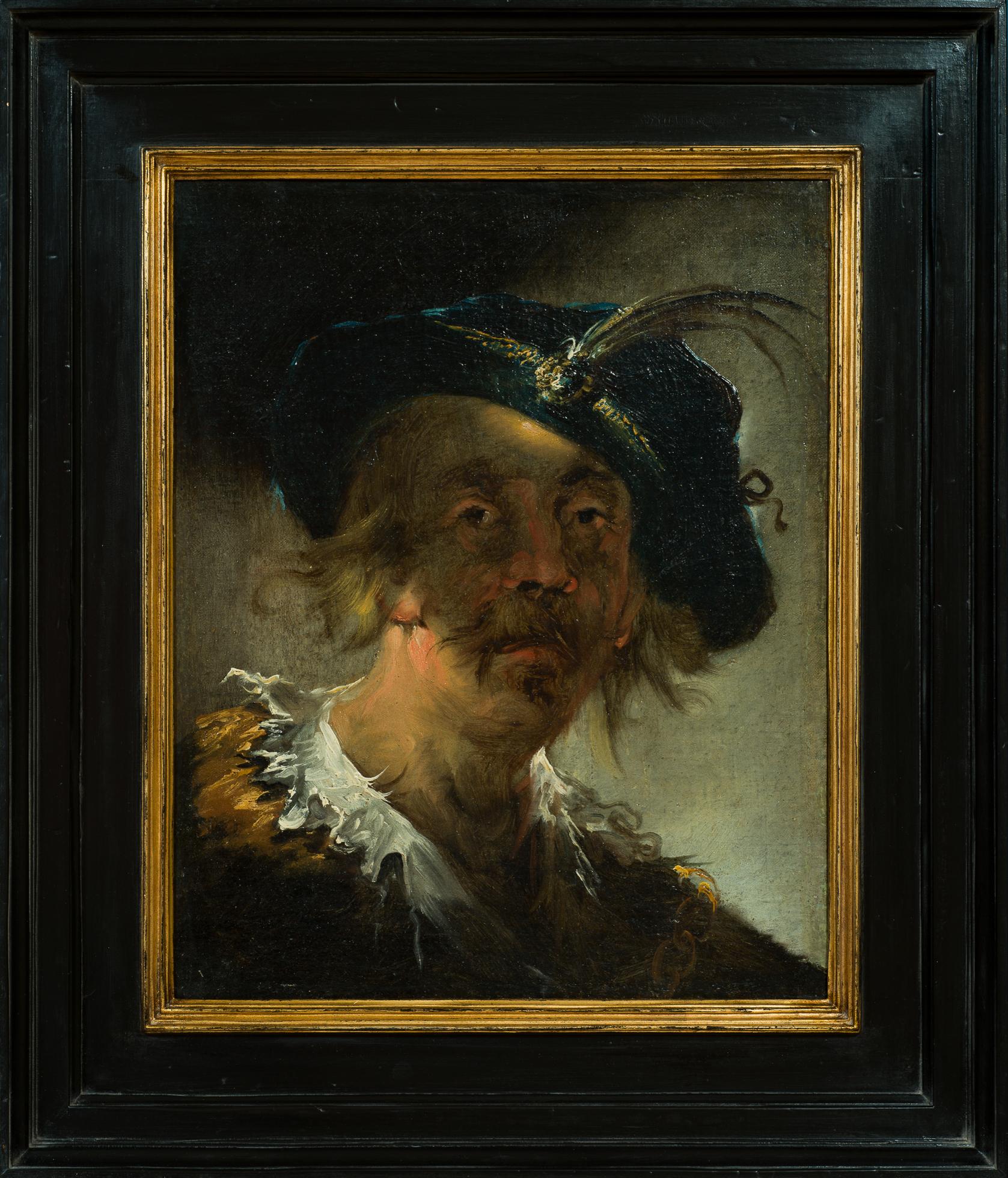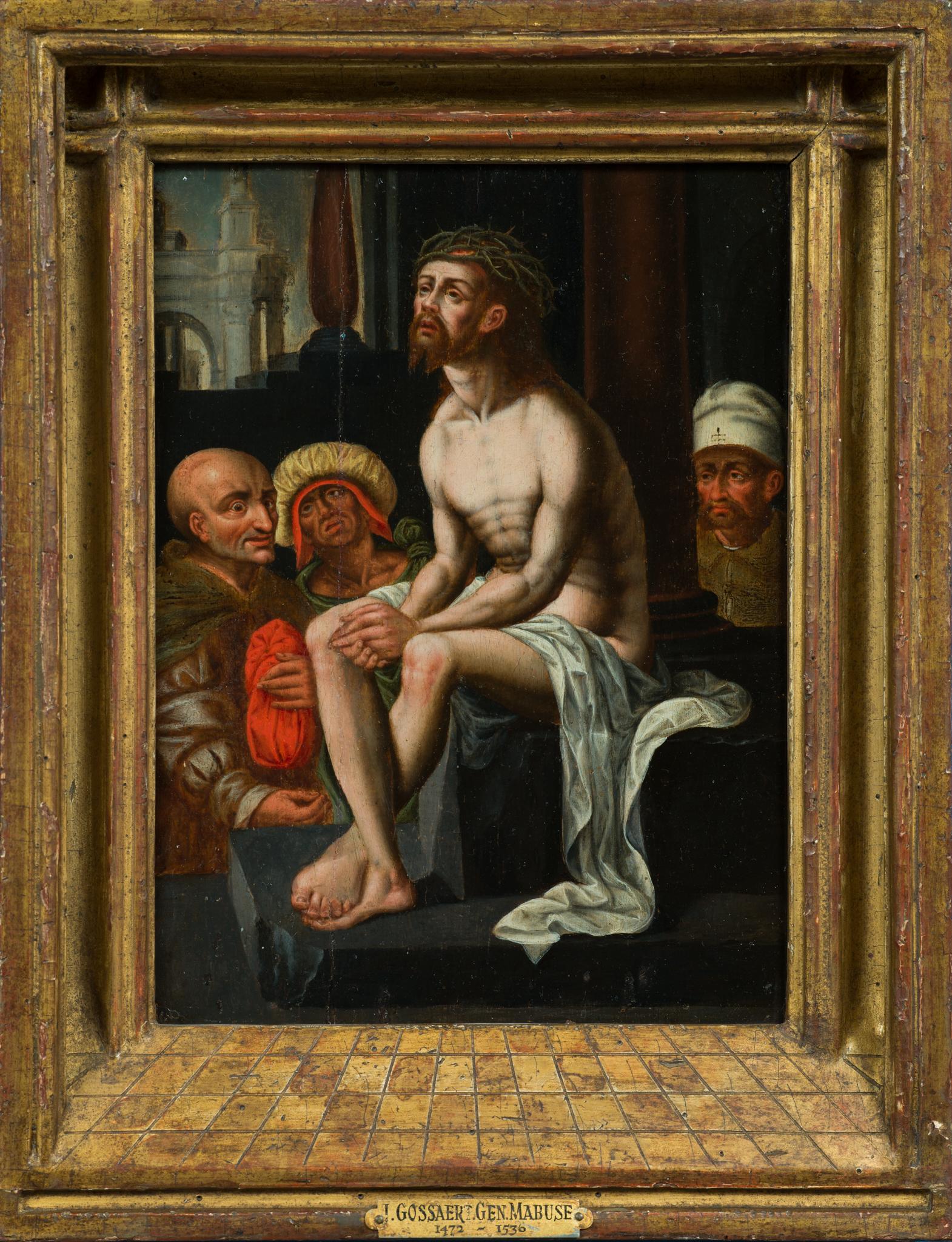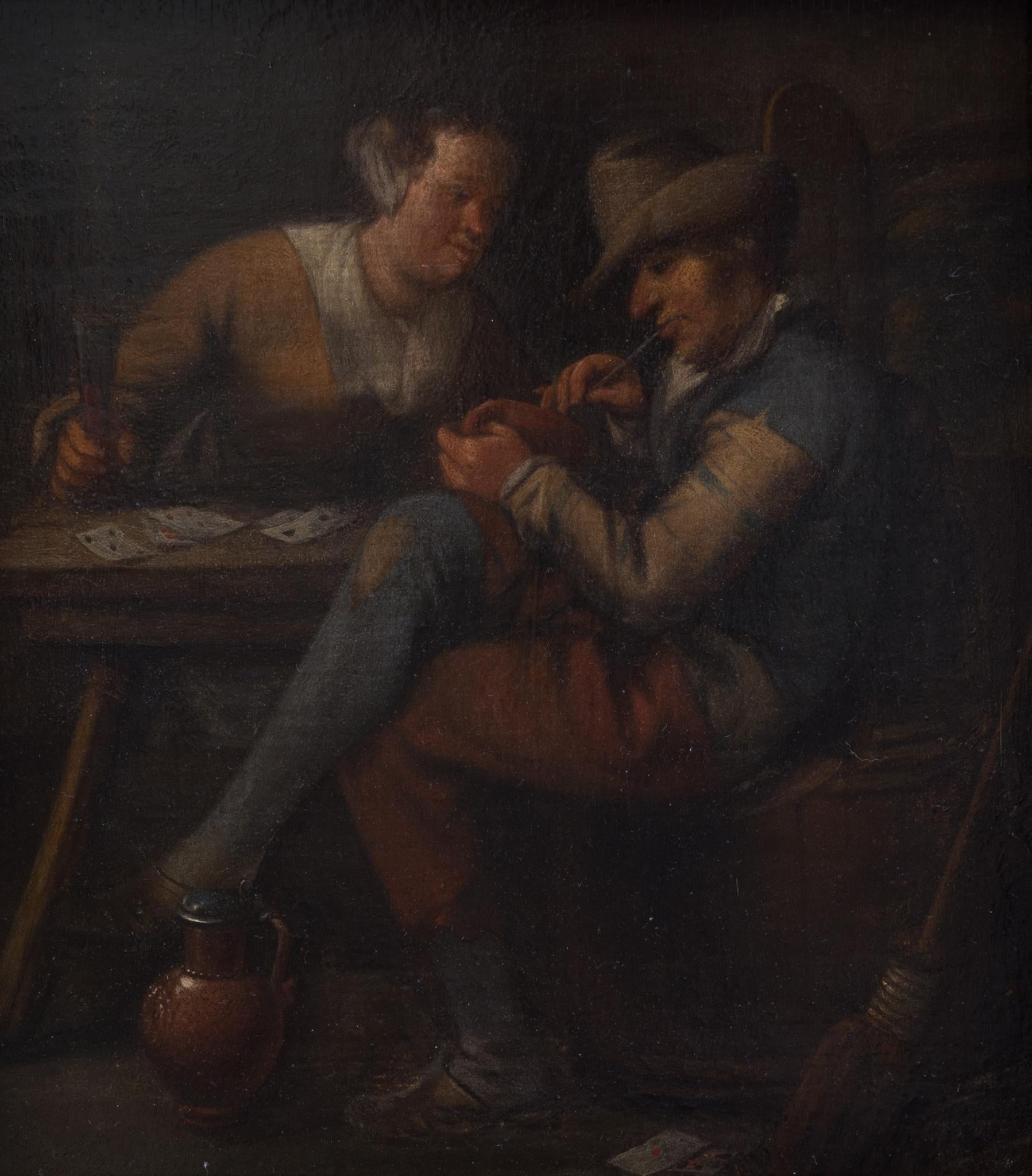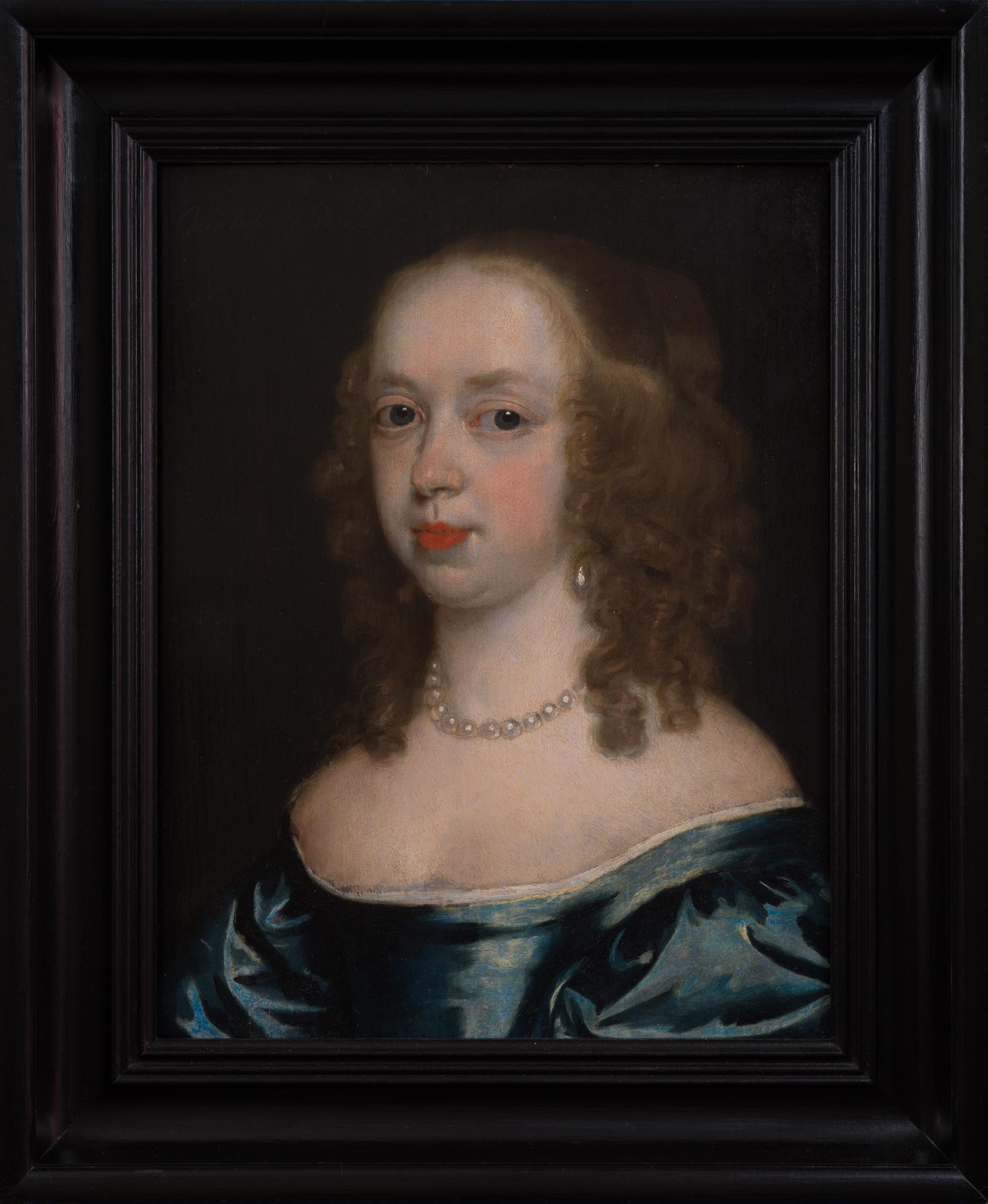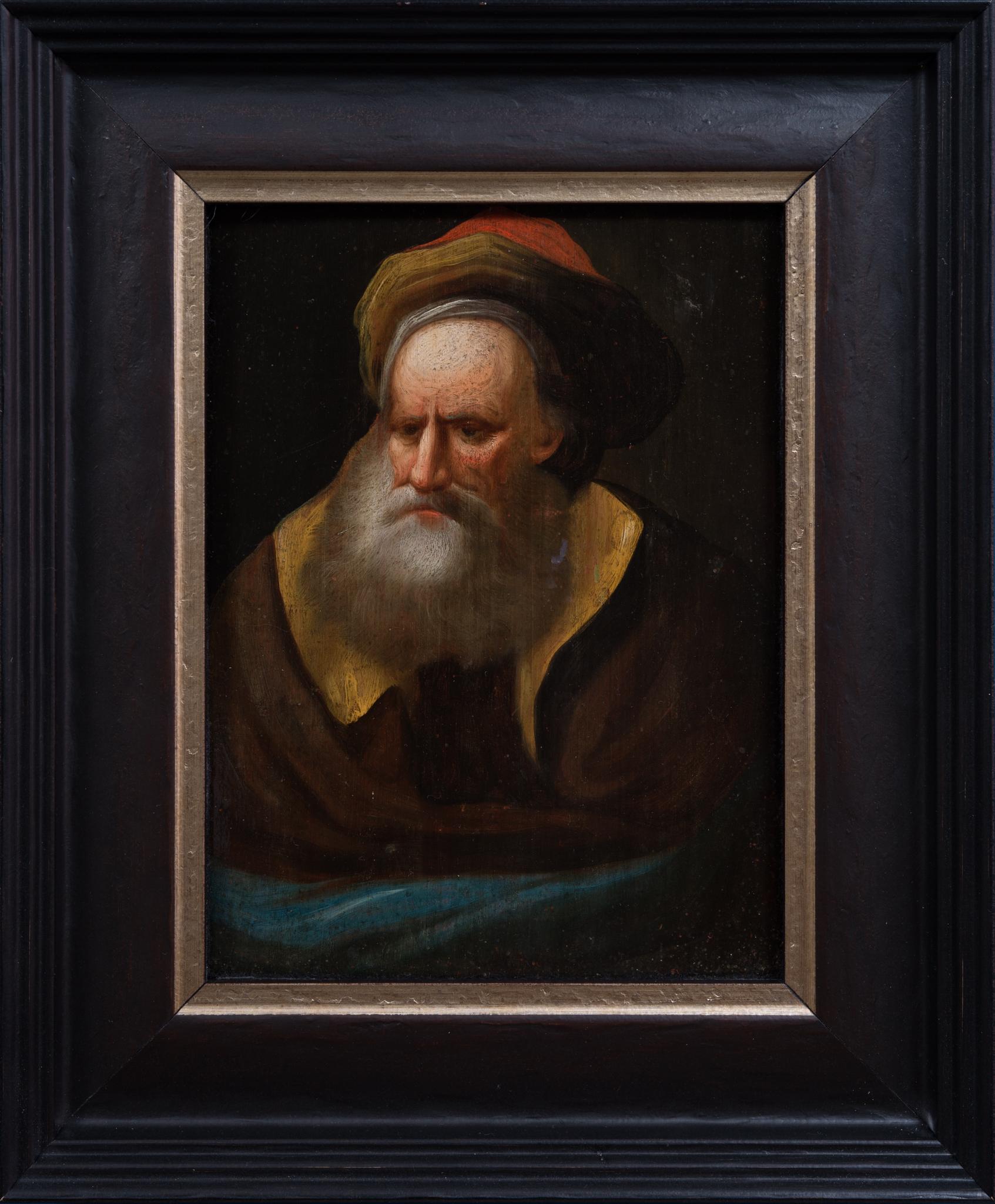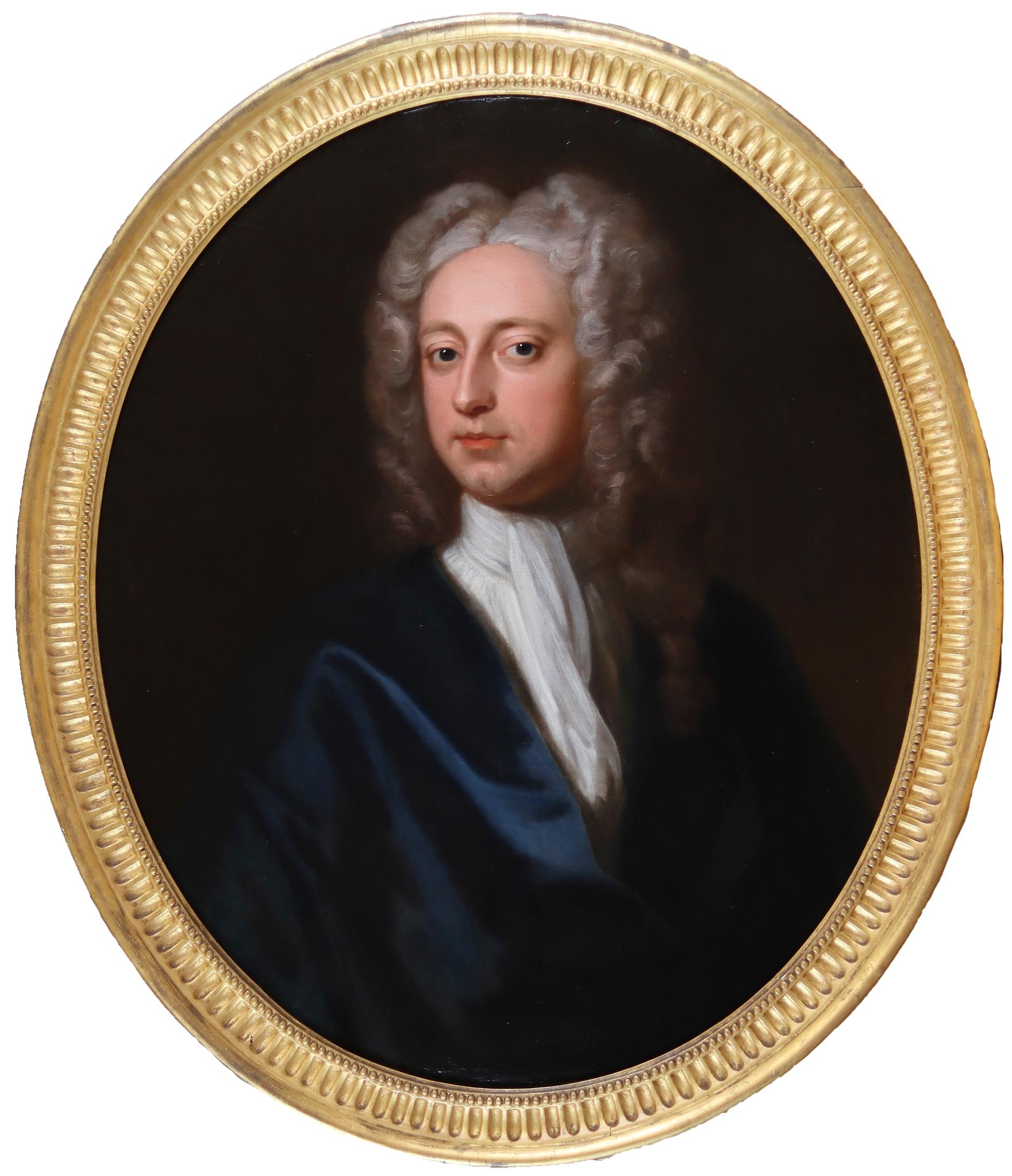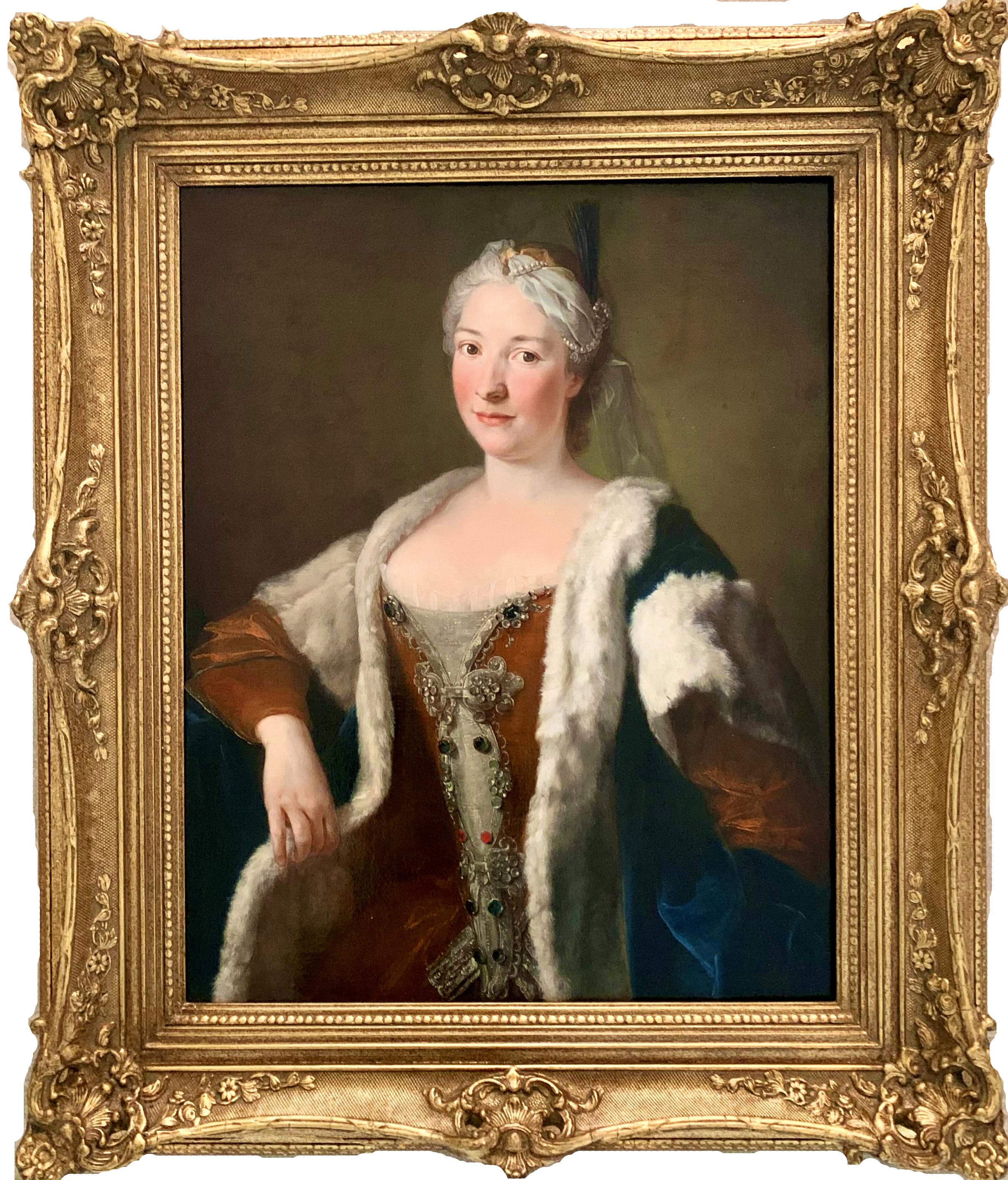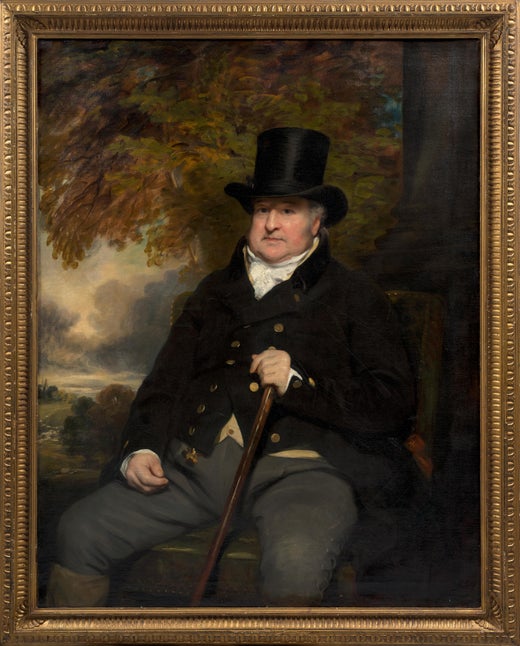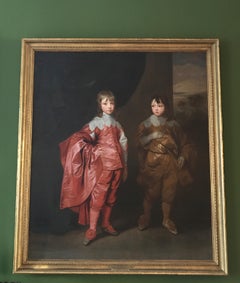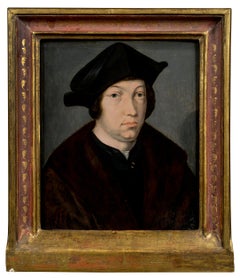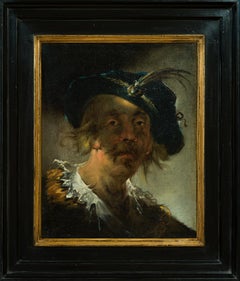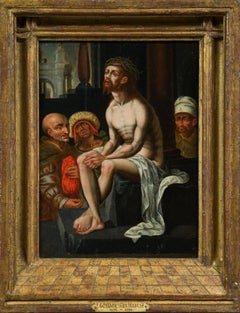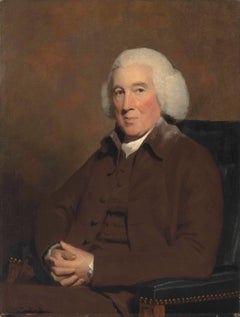
18th Century Oil Painting Portrait of Provost John Pitcairn of Dundee
View Similar Items
Want more images or videos?
Request additional images or videos from the seller
1 of 10
Sir Henry Raeburn18th Century Oil Painting Portrait of Provost John Pitcairn of Dundeec.1790
c.1790
$50,839.40List Price
About the Item
- Creator:Sir Henry Raeburn (1756 - 1823, British)
- Creation Year:c.1790
- Dimensions:Height: 31.5 in (80.01 cm)Width: 40 in (101.6 cm)
- Medium:
- Movement & Style:
- Period:
- Condition:
- Gallery Location:London, GB
- Reference Number:1stDibs: LU67334507811
Sir Henry Raeburn
Sir Henry Raeburn, FRSE, RA, RSA (1756–1823) was a prominent Scottish portrait painter who is now largely credited for the revival of Scottish art in the early 19th century. Born in Stockbridge, Edinburgh, he was orphaned at a young age and subsequently educated at Heriot’s Hospital. He began his career as a goldsmith's apprentice, creating portrait miniatures before transitioning to oil painting, largely self-taught. Raeburn married the wealthy Ann Edgar, which enabled him to study art in Italy, where he was advised by Sir Joshua Reynolds and others. Upon returning to Edinburgh in 1787, Raeburn quickly gained success, painting notable figures like Sir Walter Scott and Dugald Stewart. He became known for his vigorous brushwork, strong characterizations, and dramatic lighting. His direct painting style and refusal to make preparatory sketches set him apart from contemporaries, incorporating elements of Romanticism. He was knighted by King George IV in 1822 and appointed the King’s limner for Scotland. He died in 1823 at his home in Stockbridge, Edinburgh. This distinguished three-quarter length portrait depicts Elizabeth Clough (b. circa 1970-1770s), matriarch of the Clough family of Keighley, West Yorkshire. The piece was commissioned by her son, John Clough (1799–1863), a prominent engineer and industrialist in Keighley. Clough owned and operated Grove Mills, a major worsted spinning and manufacturing facility which employed a significant portion of the local workforce. Elizabeth Clough is portrayed seated in an upholstered armchair, dressed in sober but elegant attire—a dark shawl and a crisp white cap tied beneath her chin. Her direct, steady gaze and flushed cheeks convey quiet strength and maternal dignity. The subdued, neutral background serves to emphasize the face and upper body, while still maintaining an airy and light feel. The face is rendered with sensitive modeling and naturalistic lighting, while the fabric of her garments contain blockier brushstrokes yet do not lose their sensitivity. These characteristics, combined with the information gleaned from the label, place this piece in the tradition of early 19th century Scottish portraiture.
About the Seller
5.0
Vetted Professional Seller
Every seller passes strict standards for authenticity and reliability
Established in 1990
1stDibs seller since 2017
42 sales on 1stDibs
Authenticity Guarantee
In the unlikely event there’s an issue with an item’s authenticity, contact us within 1 year for a full refund. DetailsMoney-Back Guarantee
If your item is not as described, is damaged in transit, or does not arrive, contact us within 7 days for a full refund. Details24-Hour Cancellation
You have a 24-hour grace period in which to reconsider your purchase, with no questions asked.Vetted Professional Sellers
Our world-class sellers must adhere to strict standards for service and quality, maintaining the integrity of our listings.Price-Match Guarantee
If you find that a seller listed the same item for a lower price elsewhere, we’ll match it.Trusted Global Delivery
Our best-in-class carrier network provides specialized shipping options worldwide, including custom delivery.More From This Seller
View AllSir Anthony Van Dyck 17th Century Oil Painting Study of a Head of a Man
By Anthony van Dyck
Located in London, GB
Sir Anthony Van Dyck (1599-1641, Flemish)
Study of a Head of Man
Circa 1627-32, Van Dyck’s second Antwerp period
Oil on paper, laid down on canvas
Dimensions 15 x 14 inches (38.1 x 3...
Category
17th Century Old Masters Portrait Paintings
Materials
Oil
Lady Dormore - A 16th Century Portrait of a key member of Shakespeare's England
Located in London, GB
Lady Dormer, Mary Browne
c. 1592
oil on panel
35 x 29 inches, unframed;
41 x 34.75 inches, inc. frame
Inscribed 'Lady Dormore'
Mary married Henry Wriothesley, 2nd Earl of Southampton who gave birth to Henry Wriothesley, 3rd Earl of Southampton - one of the great figures in Shakespears"s circle and founder of the Virginia company, developers of Virginia USA.
Henry Wriothesley, born 6 October 1573 at Cowdray House, Sussex, was the only son of Henry Wriothesley, 2nd Earl of Southampton, by Mary Browne, the only daughter of Anthony Browne, 1st Viscount Montague, and his first wife, Jane Radcliffe.[5] He had two sisters, Jane, who died before 1573, and Mary (c. 1567 – 1607), who in June 1585 married Thomas Arundell, 1st Baron Arundell of Wardour.[6]
After his father's death, Southampton's mother married firstly, on 2 May 1595, as his second wife, Sir Thomas Heneage (d. 17 October 1595), Vice-Chamberlain of the Household, and secondly, between 5 November 1598 and 31 January 1599, Sir William Hervey. She died in November 1607.[7]
Early life
When his father died on 4 October 1581 Southampton inherited the earldom and landed income valued at £1097 6s per annum. His wardship and marriage were sold by the Queen to her kinsman, Charles, Lord Howard of Effingham, for £1000. According to Akrigg, Howard then "entered into some further agreement, of which no documentation can now be found, which transferred to Lord Burghley personally the custody and marriage of the young Earl, but left Howard holding his lands", and late in 1581 or early in 1582 Southampton, then eight years of age, came to live at Cecil House in the Strand.[8]
In October 1585, at age twelve, Southampton entered St John's College, Cambridge,[9] graduating M.A. on 6 June 1589.[10] His name was entered at the Gray's Inn legal society before he left the university, and he was admitted on 29 February 1588.[11]
On Southampton's 16th birthday, 6 October 1589, Lord Burghley noted Southampton's age in his diary, and by 1590 Burghley was negotiating with Southampton's grandfather, Anthony Browne, 1st Viscount Montague, and Southampton's mother, Mary, for a marriage between Southampton and Lord Burghley's eldest granddaughter, Elizabeth Vere, daughter of Burghley's daughter, Anne Cecil, and Edward de Vere...
Category
16th Century Old Masters Figurative Paintings
Materials
Oil
Double Portrait Oil Painting Brothers George, 2nd Duke Buckingham & Lord Francis
By (After) Anthony Van Dyck
Located in London, GB
Aftrer Anthony VAN DYCK - maybe Studio (1599, Antwerp – 1641, London) Flemish
Double Portrait of George Villiers, 2nd Duke of Buckingham (1628-1687) & Lord Francis Villiers (1629-1648)
Oil on Canvas
170 x 147 cm
Anthony Van Dyck (1599-1641)
No painter has done more to define an era than Anthony van Dyck. He spent only seven and a half years of his short life (1599- 1641) in England. He grew up in Antwerp, where his precocious talent was recognised by Peter Paul Rubens, the greatest painter of his age. He worked in Rubens’s studio and imitated his style as a religious artist, painting biblical scenes redolent of the lush piety of the counter-reformation. But soon he was on the move. In 1620, he visited London for a few months, long enough to paint a history picture, The Continence of Scipio, for the royal favourite, George Villiers, Marquess of Buckingham, and a portrait of his other English patron, the great art collector, Thomas Howard, 2nd Earl of Arundel.
After a stint in Italy, making imposing portraits of the wealthy aristocracy and sketching and copying works by Titian, he returned to the Spanish Netherlands in 1627, becoming court artist to Archduchess Isabella before departing for The Hague in 1631 to paint the Dutch ruler Frederick Henry, Prince of Orange. Charles I’s invitation in 1632 led Van Dyck back to London where he was knighted, paid an annual salary of £200 and installed in a house in Blackfriars with a special jetty at which the royal barge might tie up when the King was visiting his studio. By this time Van Dyck was recognised as the leading court painter in Europe, with Velazquez at the court of Philip IV of Spain his only rival. He also excelled as a superbly observant painter of children and dogs.
Van Dyck’s notoriety in depicting children led to the introduction of groups of children without their parents as a new genre into English painting (amongst other new genres).
For the next 300 years, Van Dyck was the major influence on English portraiture. Nearly all the great 18th Century portraitists, from Pompeo Batoni and Allan Ramsay to Thomas Gainsborough and Joshua Reynolds, copied Van Dyck’s costumes, poses and compositions.
George Duke of Buckingham & his brother Francis Villiers
Painted in 1635, this double portrait was originally commissioned by Charles I, who raised the two brothers after their father, George Villiers, was assassinated in 1628. Together with their sister, Lady Mary Villiers, they enjoyed the King’s favour absolutely. Francis whose absolute ‘inimitable handsomeness’ was noted by Marvell (who was killed in a skirmish near Kingston upon Thames). The young duke who commanded a regiment of horse at the Battle of Worcester, remained closely associated with Charles II, held a number of high offices after the Restoration and was one of the most cynical and brilliant members of the King’s entourage, immortalised as ‘Zimri’ in Dryden’s Absalom and Achitopbel. As a young man he had sold his father’s great collection of pictures in the Spanish Netherlands, many of them to the Archduke Leopold Willhelm.
Painted for Charles I and placed near the portrait of their sister in the Gallery at St James’ Palace. The handling of both costumes is very rich, and the heads are very carefully and sensitively worked. That of the younger boy in particular is more solidly built up than the lower part of the figure. A preparatory drawing for the younger boy is in the British Museum.
There are copies at, e.g., Highclere Castle...
Category
17th Century Old Masters Portrait Paintings
Materials
Oil
17th Century Oil Painting Portrait of a Young English Boy
By Gerard Soest
Located in London, GB
Gerard SOEST (1600 - 1681)
Portrait of a Young Boy
oil on canvas
35.5 x 30.5 inches inc. frame
Gerard Soest (circa 1600 – 11 February 1681), also known as Gerald Soest, was a portra...
Category
17th Century Old Masters Portrait Paintings
Materials
Oil
Large Beautiful Early 17th Century Painting of St Peter
Located in London, GB
17th Century Italian School
St Peter
Oil on Canvas
55 1/2 x 41 inches
This large and tender rendering of Saint Peter was painted by the hand of great Italian painter of the 17th Cen...
Category
Early 17th Century Baroque Portrait Paintings
Materials
Oil
Portrait of an Italian Noblewoman
Located in London, GB
15th century, Italian
Circle of Antonio del Pollaiuolo (1429-1498)
Portrait of an Italian Noblewoman
Oil and tempura on poplar panel
With partial inscription: ALZETAPIN
Provenance:...
Category
15th Century and Earlier Renaissance Portrait Paintings
Materials
Oil, Tempera, Wood Panel
You May Also Like
Portrait of a Lady, After Sir Peter Lely (1610-1680) Oil Painting
By After Sir Peter Lely
Located in Uppingham, GB
Oil Painting After Sir Peter Lely (1610-1680) Portrait of a Lady
Housed in a Lely gold Leaf Frame.
Peter Lely:
In 1647 he became a member of the Pain...
Category
17th Century Old Masters Portrait Paintings
Materials
Oil
Portrait of a Man
Located in New York, NY
Provenance:
with Leo Blumenreich and Julius Böhler, Munich, 1924
Dr. Frederic Goldstein Oppenheimer (1881-1963), San Antonio, Texas; by whom given to:
Abraham M. Adler, New York, until 1985; thence by descent to the present owners
While old inscriptions on the verso of this panel propose its author to be Hans Holbein and the sitter Sir John More—a lawyer, judge, and the father of Sir Thomas More—this fine portrait has long been recognized to be by a Flemish hand. Max Friedländer gave the painting to Bernard van Orley (1487/1491 – 1541) in 1924, but did not include it in the volume dedicated to the artist in his Early Netherlandish Paintings...
Category
16th Century Old Masters Portrait Paintings
Materials
Oil, Panel
$52,500
Portrait of a Man – A Dramatic Study in Light and Expression
Located in Stockholm, SE
This compelling portrait, recently studied by Stéphane Pinta of the esteemed Cabinet Turquin in Paris, has been confidently attributed to the Austrian painter Matthäus (Matthias) Lod...
Category
Late 18th Century Old Masters Portrait Paintings
Materials
Canvas, Oil
Christ on the Cold Stone – After Jan Gossaert (Mabuse)
Located in Stockholm, SE
This striking devotional image, painted by a follower of Jan Gossaert, represents one of the most influential compositions of the Northern Renaissance: Christ on the Cold Stone, or C...
Category
16th Century Old Masters Figurative Paintings
Materials
Oil, Wood Panel
Portrait of an Elderly Man
Located in Stockholm, SE
This finely executed oil painting, attributed to the circle of Christian Wilhelm Ernst Dietrich, captures the contemplative expression of an elderly man, his gaze lowered in quiet re...
Category
Early 19th Century Old Masters Portrait Paintings
Materials
Oil, Wood Panel
The Card Players by a Flemish 1600s Artist
By Flemish School, 17th Century
Located in Stockholm, SE
Flemish 1600s School
The Card Players
oil on oak panel
panel dimensions 22.5 x 20 cm
frame included
Provenance:
From a Swedish private collection.
Condition:
Flat and stabl...
Category
17th Century Old Masters Figurative Paintings
Materials
Oak, Oil, Panel
Recently Viewed
View AllMore Ways To Browse
Antique Ivory Portrait Miniatures
George Hamilton Paintings
James Peter Henry
18th Irish Painting
18th Century Oil Paintings For Sale
18th Century Scottish Painting
Robert Young Antiques
King Master Watches
John Evangelist
William Henry Earl
James Reynolds
19th C British Woods Painting
Robert Wood Paintings For Sale
J Newton
18th Century Mourning Jewelry
Lord Of The Rings Paintings
19th Century Irish Oil Paintings Portraits
Dundee Antique
